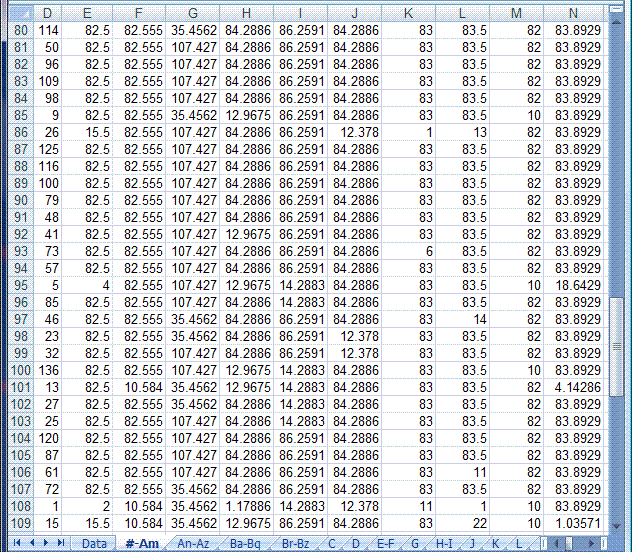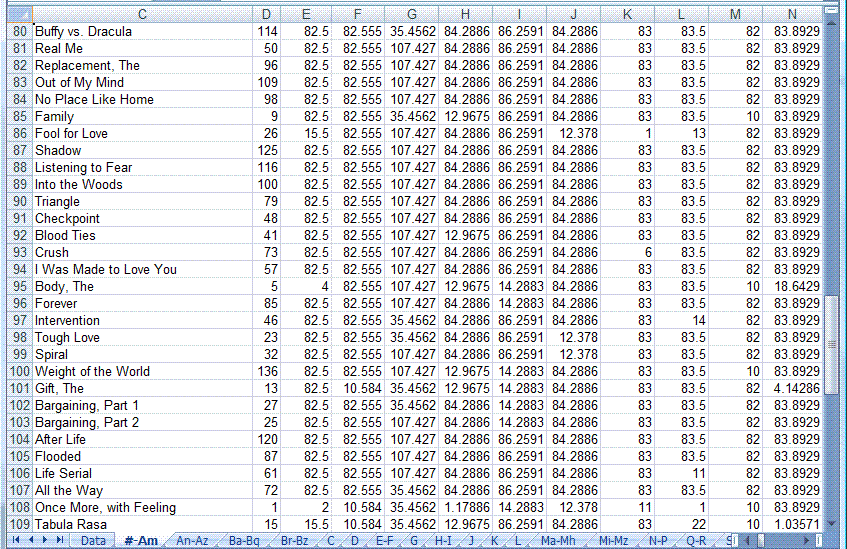




























Most people believe that stories are told by either oral or written language. However, numbers can tell a story as well. It is likely that some wag is read the last sentence and thought, "OK, smart @$$, tell me what story these numbers tell: 5, 47, 34, 236, 0, -94, 86.2, 42." The answer is, "the same as the story that these letter tell: D, u, I, Q, p, k, J, V," in other words, nothing at all. To tell a story, letters need to be organized into words. Words need to be organized into sentences. Sentences need to be organized into paragraphs. Paragraphs need to be organized into chapters. Chapters need to be organized into volumes. Most importantly, every step along the way needs context to be understood.
Like letters, numbers need to be organized to tell a story. Numbers are generally not organized in ways that parallel words, sentences, paragraphs etc. Instead, they tend to be put into rows, columns, and tabs. The one way in which numbers parallel letters in telling a story is that context is just as critical in every step. The list of numbers and the list of letters in the previous paragraph have no meaning because they are completely devoid of context.
To illustrate, the picture below is one very tiny piece of the Buffy Phenomenon:

This probably does not look like much. That is because there is no context. Here is this same piece of the Buffy Phenomenon, with a bit of context:

A screenshot that included column headings would provide a bit more context. Understanding the information on the Method page adds much more.
In The Matrix (1999), there were characters who could stare at arrays of numbers and tell exactly what they represent. In the real world, people are not like that. Even people who are labeled "numbers people" still think primarily in words. Therefore, statistical methods are used to translate the numbers into words. Outside of the Reviews and Essays section, nearly every page presents translations of the matrix of numbers sampled above. However, at its heart, the Buffy Phenomenon is just a very large group of numbers.